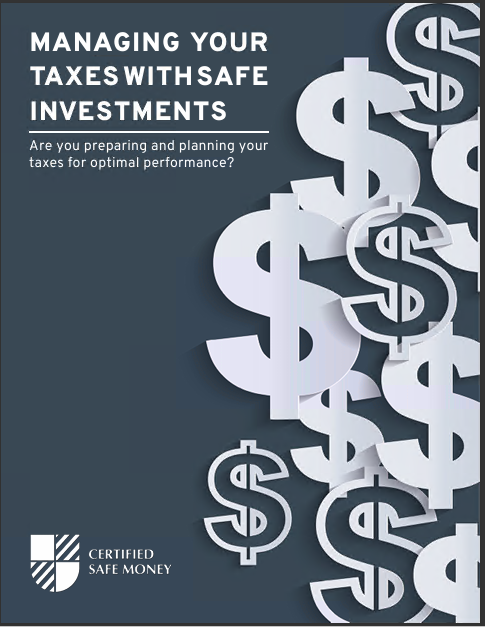Key Takeaways
-
Fixed index annuities can offer safer investment options by protecting your principal and linking your returns to market performance without direct exposure.
-
Understanding fees, surrender periods, and how returns are calculated will help ensure these annuities align with your retirement objectives.
Are Fixed Index Annuities Really Safe for Your Retirement?
As retirement approaches, you might be exploring investment options designed to protect your savings. Fixed index annuities (FIAs) often surface as attractive choices because they promise safety and growth potential. But before you make any commitments, it’s essential to get clear answers to critical questions. Here are five important ones you need to explore carefully.
1. What Exactly is a Fixed Index Annuity?
Before diving into the specifics, let’s make sure we’re on the same page about what a fixed index annuity is and isn’t.
How Fixed Index Annuities Work
FIAs are contracts between you and an insurance company. You deposit funds, either as a lump sum or over time, and your money grows based on the performance of a specific market index, like the S&P 500. The appealing part? Your principal is usually guaranteed to remain intact, even if the market dips.
However, your earnings are typically capped or limited by participation rates, meaning you won’t capture the full upside of market gains. This is the trade-off for protecting your principal from losses.
Principal Protection vs. Market Gains
Unlike direct stock market investments, FIAs shield your retirement nest egg from negative market fluctuations. But don’t mistake them for high-growth vehicles. They’re about safety first, growth second.
2. How Are Your Returns Calculated?
This question might seem basic, but it’s often misunderstood, and clarity here can make a huge difference.
Understanding Caps, Participation Rates, and Spreads
-
Caps: This is the maximum percentage you can earn in a given year. If the index rises by 15% but your FIA has a 7% cap, you’ll only see a 7% increase.
-
Participation Rates: These dictate how much of the index’s gains you’ll receive. If the participation rate is 50% and the market goes up 10%, you only get a 5% return.
-
Spreads: Sometimes, instead of or along with caps, insurance companies subtract a certain percentage (spread) from your returns. If the market grows 10% and your spread is 2%, your actual return is 8%.
Make sure you’re crystal clear on these details. Ask explicitly about caps, spreads, and participation rates, and always compare multiple annuities before choosing.
3. What Are the Real Costs Involved?
It’s easy to overlook costs with FIAs because they’re sometimes hidden or hard to understand. Here’s what to watch out for:
Surrender Charges and Timelines
Most FIAs have a surrender period lasting anywhere from 5 to 15 years. During this period, withdrawing your money could result in significant surrender charges, often decreasing gradually each year. Always ask about surrender periods upfront to avoid unexpected penalties if you need your money earlier.
Additional Fees You Shouldn’t Ignore
Even though FIAs typically don’t have traditional management fees like mutual funds, they might have fees for riders or special features such as lifetime income guarantees or enhanced death benefits. Make sure you’re clear about these charges from the start.
Transparency is critical. Always request a comprehensive fee disclosure before signing anything.
4. What Happens If You Need Your Money Early?
Life is unpredictable, and flexibility matters. You need to understand what happens if your financial circumstances change.
Withdrawal Rules and Penalties
Typically, FIAs allow a small portion of your account (usually around 10%) to be withdrawn annually without penalties, even during the surrender period. However, if you need more than this amount, substantial surrender charges could apply, significantly reducing your investment.
Emergency Provisions
Some annuities offer riders or provisions allowing penalty-free withdrawals in specific situations, such as long-term care or terminal illness. Clarify exactly what these provisions cover, and evaluate whether paying extra for them makes sense for your personal situation.
5. Can Fixed Index Annuities Provide Reliable Lifetime Income?
One of the main attractions of FIAs is their potential to guarantee lifetime income, but it’s not automatic—it’s an option you choose.
Lifetime Income Riders Explained
For an additional fee, a lifetime income rider can transform your annuity into a source of guaranteed income for life. Once activated, you’ll receive steady payments that continue regardless of market conditions or even if your initial investment depletes.
Understanding Income Amounts and Growth
The guaranteed income you’ll receive depends on several factors:
-
Your age when you start receiving payments.
-
The specific terms of your rider.
-
The length of time your money had to grow before activating income.
This income can provide immense peace of mind, but ensure you understand exactly how the guaranteed amounts are calculated.
Evaluating the Pros and Cons of FIAs
To help simplify your decision, let’s quickly outline the advantages and disadvantages.
Advantages Worth Considering:
-
Safety First: Your initial deposit is protected from market losses.
-
Stable Income: FIAs can provide predictable lifetime income.
-
Tax Advantages: Interest earned is tax-deferred until withdrawn.
Drawbacks to Keep in Mind:
-
Limited Growth: Caps and participation rates can limit your returns.
-
Reduced Liquidity: Early withdrawal penalties can be steep.
-
Complexity: Terms and conditions can be intricate and confusing.
Understanding both sides of the coin ensures your decision matches your financial goals and risk tolerance.
When Is the Best Time to Purchase an FIA?
Timing matters. Generally, FIAs might make sense if you’re approaching retirement, typically within 5-10 years, and prioritizing safety over aggressive growth. At this stage, losing a substantial portion of your savings due to market volatility could severely impact your retirement.
However, younger investors might miss significant long-term growth by choosing FIAs too early, given their conservative nature.
What to Do Before Committing to a Fixed Index Annuity
Before moving forward, follow these simple steps:
-
Research Thoroughly: Understand all terms, conditions, and costs.
-
Compare Providers: Different insurers offer varying features and terms.
-
Evaluate Your Needs: Make sure an FIA fits within your broader financial plan.
-
Ask an Expert: Consider consulting a financial advisor who specializes in retirement products.
Final Thoughts: Is an FIA Right for Your Retirement Plan?
Fixed index annuities can serve as valuable tools in securing your retirement, especially if your primary goal is preserving capital and ensuring predictable income. Yet, it’s vital to approach them with eyes wide open. Asking the right questions and thoroughly understanding the terms will help you make an informed decision aligned with your retirement objectives.
Your financial security depends heavily on your decisions today, so never hesitate to clarify every detail before signing up.











